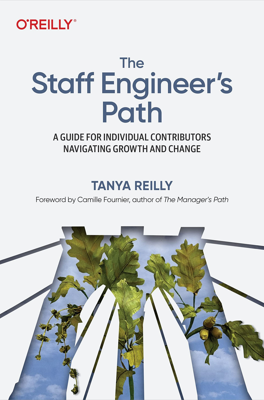Three Maps
Three Types of Maps for Navigating Your Role
Locator Map: Understanding Your Position
The locator map helps staff engineers recognize their position within the broader organization. It: - Aids in maintaining perspective by distancing from immediate team concerns. - Allows honest self-assessment about the visibility and scale of your projects within the entire company.
Topographical Map: Navigating the Organizational Terrain
This map focuses on understanding the organizational environment and the challenges within: - Identifies potential obstacles like political barriers, difficult personalities, or entrenched systems. - Uncovers existing paths like organizational "personality," decision-making processes, and unofficial organizational charts.
Treasure Map: Identifying and Aligning Goals
The treasure map is about knowing the end goals and the milestones along the way: - Clarifies the ultimate purposes of projects beyond immediate technical outcomes. - Helps to create or reveal the big picture and influence the organization by setting or discovering long-term goals.
Techniques to Maintain and Utilize Maps
- Clearing The Fog of War: Engage actively to uncover hidden or obscure parts of the organizational maps.
- Skill Building: Develop the ability to distinguish valuable information and insights that can refine your maps.
- Drawing from Diverse Sources: Use interactions, formal and informal channels, and documentation to gather intelligence for your maps.
Navigating with the Locator Map
- Gaining perspective involves stepping back to understand how individual goals fit within the broader organizational objectives.
- Recognizing the relative importance or impact of projects can prevent over-prioritization of localized issues.
Navigating with the Topographical Map
- Acknowledge and navigate through the cultural and structural challenges within the organization.
- Foster understanding and communication across different teams and organizational boundaries to facilitate smoother operations.
Navigating with the Treasure Map
- Ensure there's a clear understanding of long-term goals and how current projects align with these goals.
- Address misalignments or conflicts in organizational objectives by actively participating in strategic discussions or by providing new insights and directions.
Practical Applications
- Engage in activities that broaden your understanding of the organization beyond your immediate role.
- Continuously update your knowledge and strategies based on changing organizational landscapes and goals.
- Use your insights to influence broader organizational strategies and help align them with effective technical solutions.
By actively utilizing these three maps, a staff engineer not only contributes to their immediate projects but also shapes the strategic technical direction of their organization, leading to more impactful and aligned outcomes.
